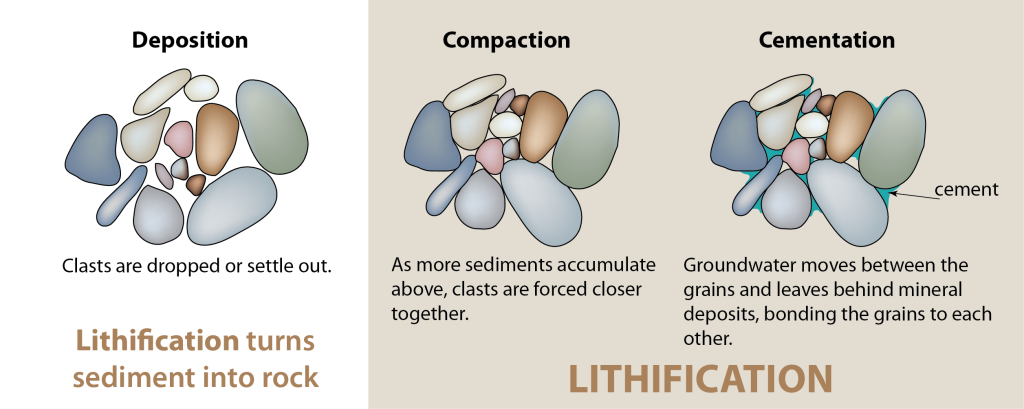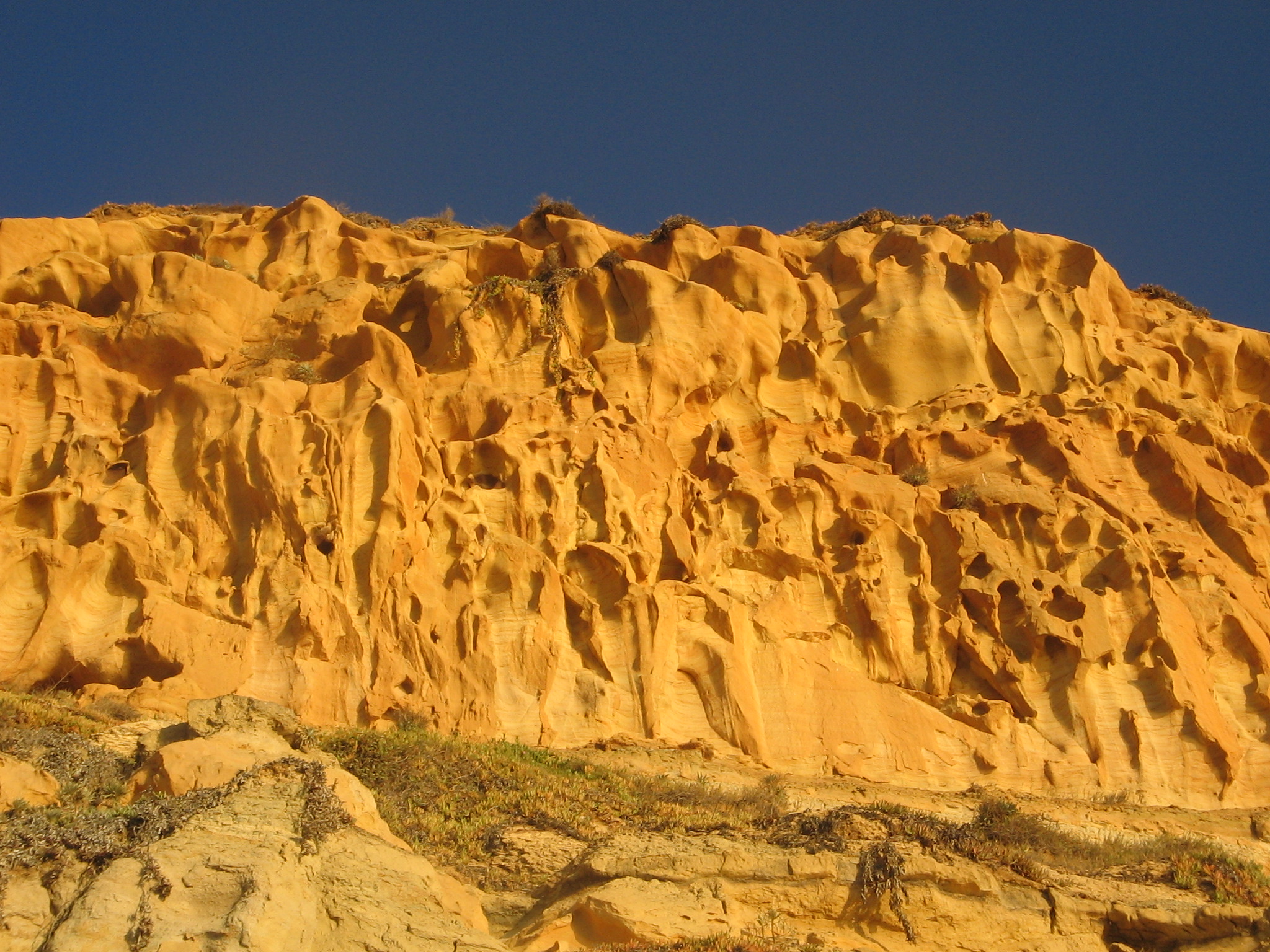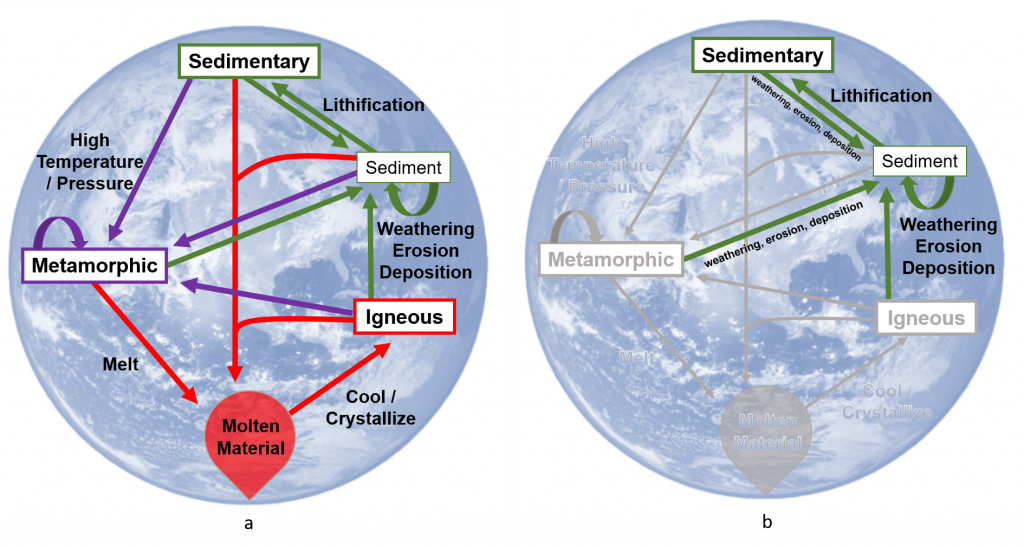Chapter 6 Sedimentary Rocks and Processes
When a geologist encounters a sedimentary outcrop, they can reconstruct ancient landscapes – rapidly flowing mountain streams, frightening avalanches, or vast deserts – from these rocks. As the name suggests, Sedimentary Rocks are composed of sediments that have been cemented and compacted together, or lithified, over long periods of time.

Sediments may include:
- Fragments of other rocks that often have been worn down into small pieces, such as sand, silt, or clay.
- Organic materials, or the remains of once-living organisms.
- Chemical precipitates, which are materials that get left behind after the water evaporates from a solution.
Both physical and chemical weathering processes that take place at the Earth’s surface are responsible for accumulating this source of sediment from preexisting igneous rocks, metamorphic rocks, and even other sedimentary rocks. Physical weathering breaks the rocks apart, while chemical weathering dissolves the less stable minerals. These original elements of the minerals end up in solution, and new minerals may form. Sediments are removed and transported by water, wind, ice, or gravity in a process called erosion.


This chapter highlights the processes that derive, transport, and deposit sediment, as well as the ones that lithifies those sediments into cohesive sedimentary rocks.
Learning Objectives
After carefully reading this chapter, completing the exercises within it, and answering the questions at the end, you should be able to:
- Explain why rocks formed at depth in the crust are susceptible to weathering at the surface.
- Describe the main processes of mechanical weathering, and the types of materials that are produced when mechanical weathering predominates.
- Describe the main processes of chemical weathering, and the products of chemical weathering of minerals such as feldspar, ferromagnesian silicates, and calcite.
- Explain the type of weathering processes that are likely to have taken place to produce a particular sediment deposit.
- Describe clastic and chemical sediment.
- Explain how sediment become sedimentary rocks
- Describe how sediment is linked to environments.
rocks that cement together from weathering products, either from sediments or chemical ions in water.
The process in which fluids, such as water, move into the pore spaces between loose sediments and - through chemical reactions - act as a bonding agent between the grains.
The process in which gravity and the pressure from overlying layers of rock cause loose sediments to press together.
The solidification of loose sediment materials as solid sedimentary rock through compacting pressures and cementation.
Rocks that crystallize from molten materials beneath the Earth surface or from volcanic processes.
Rocks that form when any type of preexisting rock is warped or transformed under elevated temperatures and pressures.
A type of weathering that involves the abrasion and breakdown of existing rocks and minerals by water, the atmosphere, and biosphere. Also known as mechanical weathering.
The dissolution, disintegration, and alteration of preexisting rock by reactions that take place at the molecular scale.

